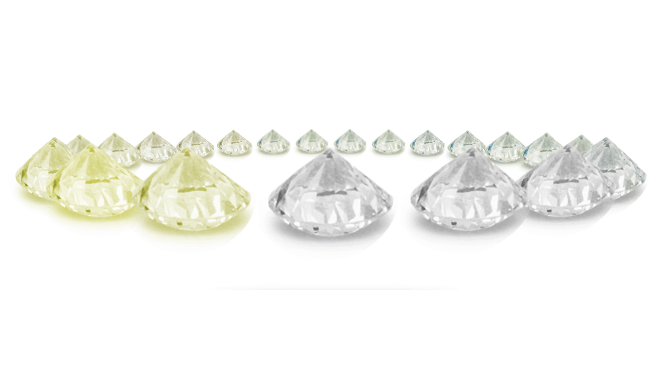Education
For nearly a century, the Liebross family has been providing exceptional customer care, helping to create and preserve family traditions through the gifts of fine jewelry, diamonds and heritage estate pieces. At Liebross, we have always believed that it is our responsibility to provide our customers with the knowledge needed to completely understand the different facets involved in the purchase of a diamond or diamond jewelry. It is our goal to provide you with the right tools to make the best choices in accordance with your vision while staying within your budget.
The short tutorial below will provide you with the base knowledge necessary to understand the complexities of buying a diamond. Feel free to reach out with any further questions!
The Four C's
Cut
Cut refers to the diamond's proportions and is an objective measure of a diamond's light performance, or the diamond's sparkle. When a diamond is cut with the proper proportions, light is returned out of the top of the diamond. If it is cut too shallow, light leaks out of the bottom. However, too deep and it will escape out of the side.
Color
Color grade refers to the diamond's lack of color. Color ranges from colorless, or white, to light yellow on a scale that begins at D and ends with Z. Past this point, diamonds can be found with a deeper or intense color, resulting in an increase in price due to the rare nature of the diamond. The rarest fancy colored diamonds include pink, blue, green, orange and sometimes red. The more intense the color, the more expensive the diamond can be.
Clarity
Clarity refers to the imperfections found naturally within the diamond. Diamonds with the least and smallest inclusions receive the highest clarity grades. Typically, inclusions can only be seen under magnification and are not visible to the naked eye. The fewer inclusions found in the diamond, the rarer the diamond.
Carat
Carat refers to measurement used to describe the diamond weight. The greater the weight, the rarer the diamond is, thus the more valuable it is.
Overall, buying the right diamond is finding the balance that works best for you and your budget. Its finding the right combination of the Four C's while remaining within your budget. In truth, there's no ideal diamond. The ideal diamond varies per person and when the time comes, we'll work with you here at Liebross to help you make the best decision possible.


